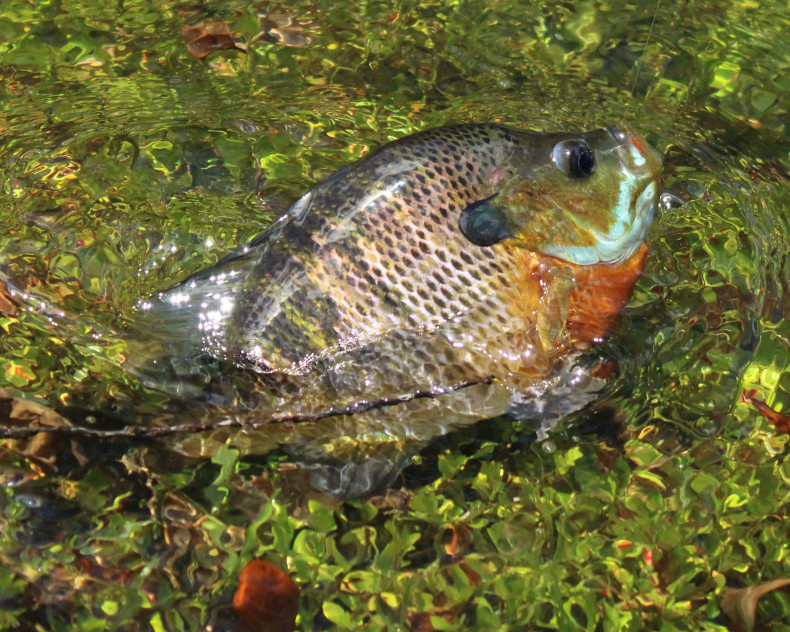Big Bream on the Long Rod
by Ed Mashburn
Here are a couple of facts:
First, there are some very big bluegill and other species of bream which live in almost all waters across the country. Even in small waters, big bream will be there.
Second, the biggest bream in any water are probably the most selective and picky feeders in the place.
We need to keep these two facts in mind. Anglers can have a lot of fun using popping bugs on fly gear for bream and in fact, fly gear is probably the best way to catch the hard-pulling sunfish which live in great numbers nearly everywhere.
Small breams are dumb and eager to eat anything that falls on the water, but the really big ones didn’t get big by being dumb. The bigger bream finds good places to hide and set up their spawning nests and where they can be safe from most threats. Catching big bream takes some skill and it takes the right gear, and let’s be honest, it takes a good bit of patience.
Let’s gear up for fly rod bream fishing. We need a light but strong rod. I love my little three-weight graphite rod I built on a GB Fly Shop blank. This rod is light in hand, and it casts a small popper well. The rod has enough backbone that I can stop a big bream when it wants to run for cover and break me off. Any fly rod which will cast a popping bug will work, but I find that the lighter weight rods are easier on the arm and shoulder for a long day’s casting, and they make catching even smaller bream- which are the kind most anglers catch most often- a lot of fun.
The most fun way to tempt big bluegill is to use a popping bug. I like smaller size bugs which I make from small pieces of yellow craft foam. These bugs tied with some sort of wiggly legs and a tuft of feathers for a tail don’t look like anything, but they are hard for bream to resist. Most of my bugs are about the size of a dime, and they often soak up water so that they ride low on the surface and even sink very slowly- and that’s not a bad thing. Big bream love slow-sinking flies.
And now for the most important element of catching big bream on the fly rod.
Let it sit. That’s it- let it sit. After making a good cast to a likely spot for big bream to be, just let that bug rest and don’t move it. Big breams see everything that falls on the water near them, but they usually don’t commit to a strike quickly. They like to study the potential meal before they eat it. Bass will take a moving popping bug and small bream will eagerly take a moving bug, but big bream, the ones we’re after, they want that bug to be motionless.
When that popping bug has rested quietly on the surface for as long as you can stand it, let it sit some more. If there is current in the place you’re fishing, let the current move the bug in a natural fashion.
And when that bug just disappears and the line comes tight, get ready for some real fun on the long rod.
